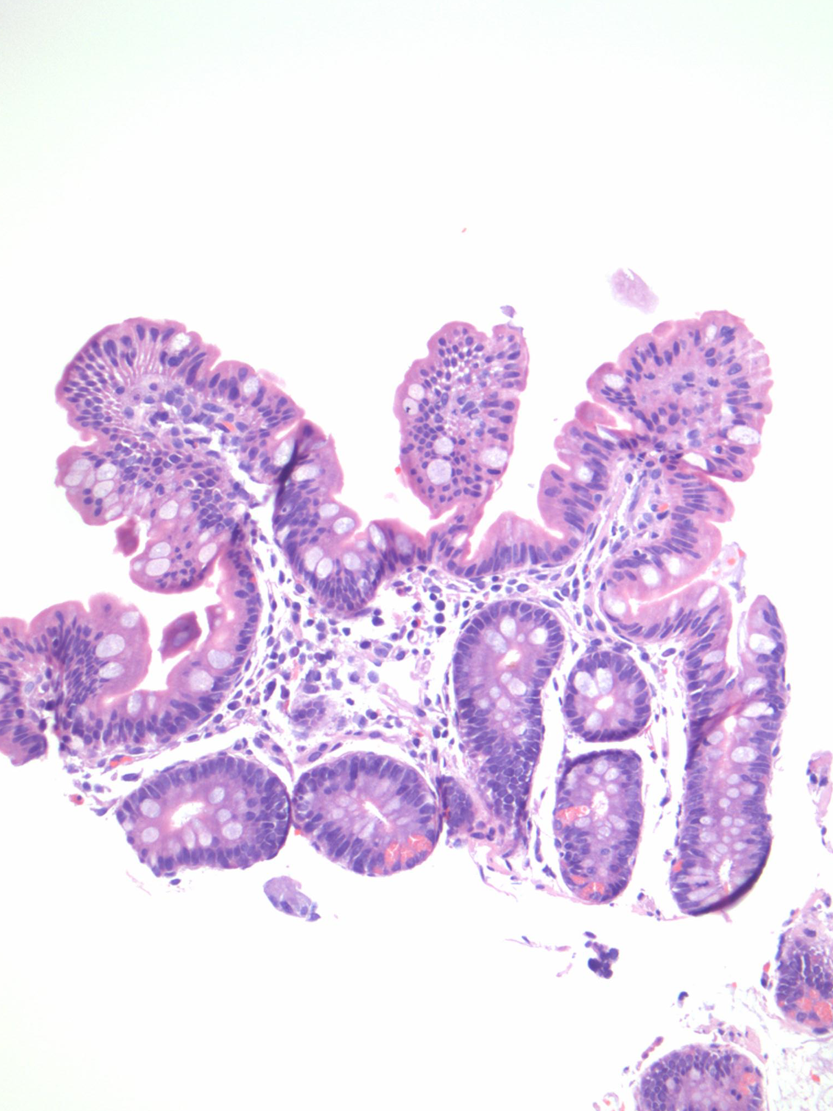Diagnosis
Children with DGAT1 deficiency present similarly to children with other congenital diarrheal disorders. Diagnostic workup should proceed in a comprehensive manner that evaluates for these other conditions (intestinal transporter defects, enterocyte dysfunction and epithelial barrier defects, enteroendocrine disorders, and disorders of the immune system). Abnormalities in highlighted diagnostic tests are more consistent with DGAT1 deficiency. The hypoalbuminemia from a protein-losing enteropathy is a defining feature, despite preserved villous/crypt architecture. Lymphangiectasia and CD55 deficiency are also commonly part of the differential diagnosis.
Laboratory Evaluation:
- Comprehensive metabolic panel (including electrolytes panel, BUN/Cr, protein/albumin, bilirubin, AST/ALT)
- Complete blood count
- Iron panel
- Vitamins A, D and E, and INR (vitamin K)
- Essential fatty acid panel
- Lipid panel (including triglyceride)
- Quantitative immunoglobulins (IgG, IgA, IgM, IgE)
- Stool pathogens (culture, viral, O+P, Giardia/Crypto)
- Stool alpha-1-antitrypsin
- Fecal fat
- Stool reducing substances
- Stool electrolytes (Na, Cl, K)
- Fecal elastase
Endoscopic Evaluation:
- Esophagogastroduodenoscopy with biopsy (with electron microscopy (EM) for duodenal tissue)
- Colonoscopy with biopsy (with EM of ileal and colonic tissue)


Genetic Testing:
- Targeted congential diarrhea panel (please see example test here)
- Genetic tests for DGAT
- Whole exome sequencing